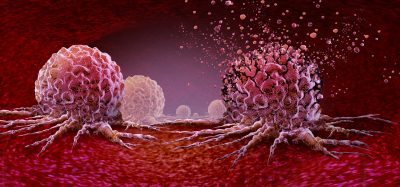New effective combination therapy for paediatric T-acute leukaemia
Posted: 21 June 2022 | Ria Kakkad (Drug Target Review) | No comments yet
The combination of two drugs was more effective in eradicating leukaemia cells in zebrafish and human disease than using a single drug.


Acute lymphoblastic leukaemia (ALL) is the most common cancer affecting children. The T-ALL form of leukaemia that emerges from early T lineage cells has a poorer prognosis than B-lineage ALL. The prognosis for relapsed T-ALL is very poor and new therapies are sorely needed. A joint study by Tampere University’s Faculty of Medicine and Health Technology, Finland, the Massachusetts General Research Institute, and the Harvard Stem Cell Institute both US, discovered a new combination of drugs that is effective against T-ALL.
The finding, which was recently published in Blood, is based on a previous discovery made by the Tampere University research group where the general tyrosine kinase inhibitor dasatinib was found to be effective in approximately one third of the tested patient samples.
In the treatment of leukaemia, the efficacy of a single drug is usually lost quickly, so the new study searched for drug combinations that would have an enhanced synergistic effect with dasatinib. This was the case with temsirolimus, a drug that inhibits a parallel signalling pathway. The combination of the two drugs was more effective in eradicating leukaemia cells in zebrafish and human disease than using a single drug.
“During this study, we developed a new drug screening method for the rapid assessment of drug responses in zebrafish leukaemia samples. In this screen, an effective drug combination was found, which was later confirmed by several cell line models, patient samples and human leukaemia grown in mice,” said Saara Laukkanen, the first author of the study. “This has been a long project, taking four to five years, and as a result, we now understand the mechanism of action of these drugs at molecular level in T-ALL”.
“The development of precision treatments is slow and requires accurate knowledge of the molecular mechanisms that cause and maintain disease. Here we utilised a specific dependency of T-ALL cells on certain signalling routes that the combination of dasatinib and temsirolimus shuts off,” said Dr Olli Lohi.
“This is a promising new treatment option for T-acute leukaemia. The next step is to take the discovery into clinical practice for patients with relapsed or refractory disease via early phase clinical trials,” he concluded.
Related topics
Drug Development, Screening
Related conditions
acute lymphoblastic leukaemia (ALL)
Related organisations
Harvard Stem Cell Institute, Tampere University’s Faculty of Medicine and Health Technology, the Massachusetts General Research Institute
Related people
Dr Olli Lohi, Saara Laukkanen








